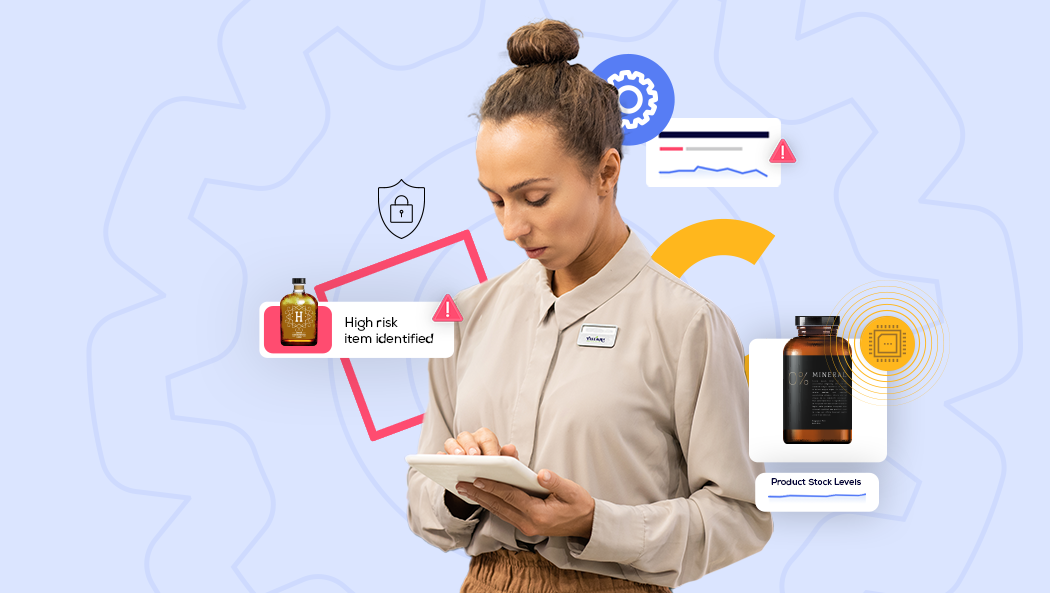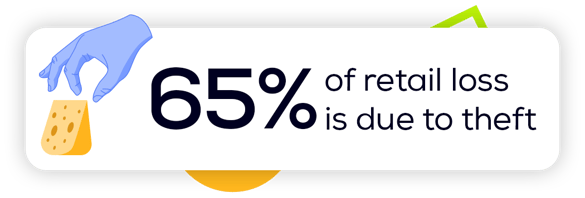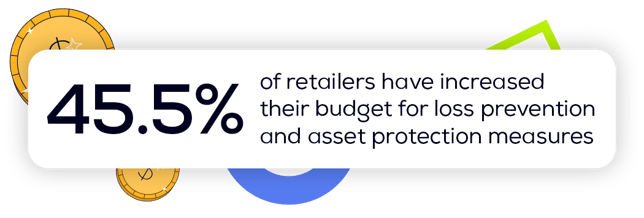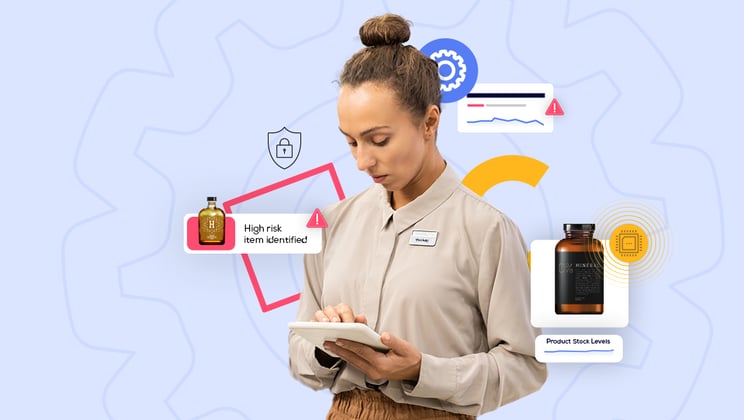How to improve retail loss prevention with cognitive technology

- 5 minute read
- Retail Insight Team
Grocery retail loss is inevitable.
As a result, the question puzzling retailers isn’t how to avoid it entirely, but how to mitigate it amidst increasing retail pressures.
These pressures often mean that retailers resort to loss prevention measures that see their employees unintentionally being put into dangerous situations. A prime example being increased powers to chase down thieves in-store.
These measures are typically reactive and aren’t data-led, and in periods of high inflation, it pays to work smarter on your loss prevention strategies. The key to which is having accurate inventory signals.
However, theft, mis-scans, damage and process errors create inaccurate inventory entries leading to broader challenges with total loss.
The solution? New cognitive technologies are emerging that detect discrepancies between sales and inventory records, alerting retailers to suspicious patterns. By using cognitive technology, retailers will be better positioned to devise and invest in smarter security measures. This will help prevent high volumes of loss and recover lost sales.
The true impact of retail loss
Retail shrinkage can be broken down into four primary loss areas: employee (internal) theft, customer (external) theft, administrative errors, and fraud1.
By far the biggest driver is theft which contributes a substantial 65.5% of loss figures2. Organized retail crime alone is estimated to cost retailers $719,548 per $1 billion in sales2.
As a result, 44.5% of retailers have increased their budget for loss prevention and asset protection measures - with 59.9% authorizing Loss Prevention and Asset Protection personnel to apprehend shoplifters2.
 Whilst the need for increased security is undeniable, retailers shouldn't rush to deploy loss prevention strategies that can be blunt when executed poorly, and have a negative impact on the shopper experience. Here we break down a few of these common approaches and how they can have a substantial positive impact when paired with data.
Whilst the need for increased security is undeniable, retailers shouldn't rush to deploy loss prevention strategies that can be blunt when executed poorly, and have a negative impact on the shopper experience. Here we break down a few of these common approaches and how they can have a substantial positive impact when paired with data.
Locked glass cabinets
Grocery retailers are increasingly locking high-risk products behind glass cabinets, which are unable to be opened by shoppers. However, many shoppers are complaining about the extensive use of lock boxes and cabinets, particularly during times of high inflation when theft increases. The time and effort to locate a store associate to unlock a product can also result in customers walking away from the purchase altogether.
Equally, the catch all approach means that retailers may also be locking products away that don’t need to be.
Fortunately, there are better ways to implement physical lock devices throughout your stores. With the right data signals, retailers can identify which products require more security and, more specifically, in which region, store and time period.
This approach provides better product prioritization for retailers as well as saving on both human resource and capex expenditure, whilst minimizing staff intervention.
Radio-frequeny identification (RFID) technology
RFID technology delivers an additional layer of internal control and monitoring over tagged products. Tags are continually sending real-time data to RFID readers, triggering alerts to security teams if a tagged item is taken or tampered with by an internal staff member or customer attempting to shoplift. RFID technology allows for simultaneous scanning of items, significantly speeding up the inventory counting process compared to traditional barcodes.
When a retailer integrates their RFID tracking systems into their inventory management software, a continuous loop of updated inventory data is captured in real-time. Any discrepancies or anomalies detected in the inventory system can be flagged, allowing for proactive problem resolution. Failing to implement a data-led loss prevention strategy like this runs the risk of increased grocery shrinkage and reduces overall inventory system accuracy as a result.
AI theft-detection
AI theft-detection uses advanced video analysis at checkouts, able to monitor product scans using existing CCTV feeds. This technology is getting better at detecting non-scans and fraudulent product placement - sending alerts directly to security personnel if such behavior is detected.
Before deployment, these AI systems undergo training to recognize patterns associated with theft and suspicious behavior. This training involves feeding the system a large dataset of normal and abnormal activities for learning, which then correlates with your point-of-sale (POS) data.
In the best scenario, this helps identify specific items that may be targeted for theft. But if your inventory dataset is riddled with inaccurate data, these detection systems could create false negatives, and the results can be disappointing, meaning it will take longer to see a return on your AI theft prevention investment.

Retailers must go further than security
There’s no denying how crucial security measures are to prevent loss. While theft is an unmistakably large contributor to total loss, it only tells part of the story. Process errors are estimated to cause over 25%2 of retail shrink. Indeed, these errors have a drastic impact on inventory signals, yet they are low-hanging fruit that retailers can address quickly.
The problem is typically due to unintuitive or ineffective legacy solutions. Retailers need access to tech that pinpoints potential process failures and provides the data-led insights needed to resolve them.
For example, there are established AI and ML solutions that can provide estate-wide inventory visibility that detects and automatically corrects inventory inaccuracies. This can help significantly mitigate loss and wider shrink by reducing the noise of messy data, enabling loss prevention teams to get to the insights that matter.

Unlock the potential of cognitive technology
There’s no denying that loss prevention is a major cause of concern for the retail industry. However, with the right technology embedded across your estate, you can achieve more control over your loss prevention strategies and mitigate theft - resulting in an overall reduction in total loss.
Managing costs while ensuring effective loss prevention is a delicate balance, particularly when margins are tight. Data-led solutions not only align with existing loss prevention initiatives but also offer a cost-effective approach to improving them. By leveraging accurate, real-time data, retailers can make informed decisions that target specific areas of vulnerability, reducing the need for extensive capital expenditure. This approach streamlines operations and enhances efficiency, ensuring that investments in loss prevention are both strategic and sustainable, ultimately protecting the bottom line without compromising on security measures.
>Retail Insight’s InventoryInsight solution offers estate-wide inventory visibility and uses sales patterns and historical data, alerting teams to exactly which loss-causing discrepancies should be actioned first. The solution isn’t just about data accuracy, it’s about improving your operations, optimizing other loss prevention technologies and processes, and giving your teams the rich datasets and insights they need to better understand the continually evolving landscape of loss.
Find out more about how our cognitive technology solutions can help.
References
1 https://www.rila.org/focus-areas/asset-protection/total-retail-loss-report-2016
2 https://nrf.com/research/national-retail-security-survey-2022
Get in touch
Written by Retail Insight Team
Retail Insight takes data and turns it into action. Our advanced algorithms unlock valuable insights that drive better decision-making for retailers and CPGs.